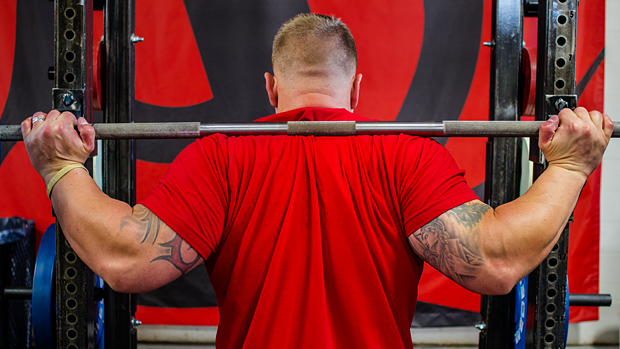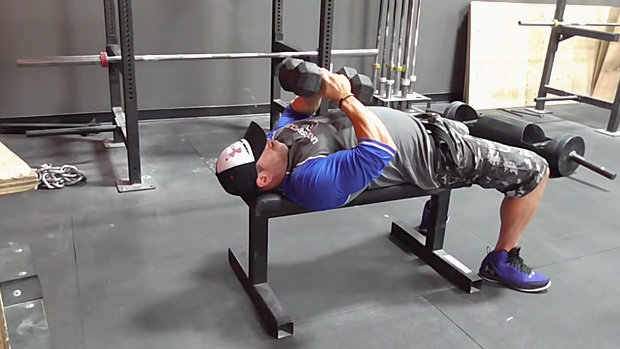The Three S's
A strong and pain-free squat depends on the three S's to maximize trainability:
- Sequencing
- Stability
- Skill
Lifters usually run into trouble with the squat, not because they lack strength, but because of their problem with one of the three S's. This can lead to pain at the lower back, shoulders, or knees. It'll also limit the amount they're able to lift.
Luckily, the squat can be performed inversely by starting the bar from a set pin height and driving through the concentric (lifting) phase before descending into the eccentric (lowering) phase.
Squat From Pins
Using a squat rack with pins or safety bars in conjunction with a low box, you can optimize the bottom position, and set your brace, tension and torque output through your pillar before the bar ever moves off the pins. Remember, the bottom position is actually the most notoriously exacerbating range of the squat.
Sit on the low box, but sit below the bar (it should not be touching your back yet). Set the pins around 1-2 inches above or below a painful range of motion or sticking point in the lift. Depending on whether you're above or below this specific range, you'll be loading for specific goals.
Setting up lower for an extended range of motion can help improve your mobility with other lifts, but it needs to be loaded appropriately so you don't cause more pain. This means that you'll most likely need to sub-maximally load this lower position as compared to your traditional top-down free squats.
While the opposite potentially holds true for positioning over your sticking point, you may also find that you can supra-maximally load this starting position because of the shortened range of motion and essentially execute a partial rep.
The power of the pins depends on a 1-2 second isometric contraction against the bar no matter the pin height, as the angle of isometric hold irradiates and creates functional transference around 10-20 degrees above or below that position. That means we must train multiple pin positions with an eclectic loading and rep range for optimal long-term results in terms of performance and orthopedic health.
Sit on the box just as you would a box squat to position your feet, hips and torso angle. When you're set, move up under the bar and tense the shoulders and core while maintaining hip position. You can hold this isometric tension for 1-2 seconds before driving up explosively.
Now Try Bands
The last variable that can help you increase strength is the using bands to create accommodating resistance. Both the traditional band setup, where bands are anchored to the ground or bottom of the rack, or a reverse band setup, where the bands support the bar while hanging from the top of the rack, can work.
Both will allow you to use more acceleration and explosion with the available range of motion at the top of the squat before your body will naturally decelerate.





